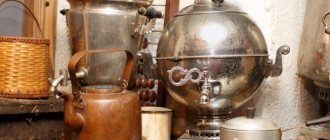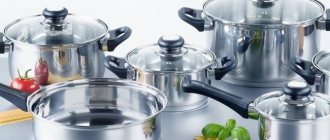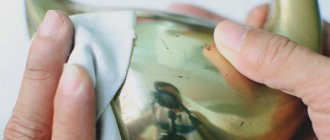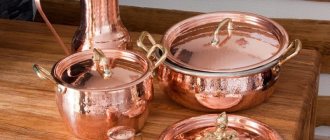Medals are a source of pride for each of their owners. Through these metal objects, you can clearly tell about a person’s achievements in a particular area. It is very important to know how to clean medals correctly when the first signs of “aging” appear on them. Remember that it is impossible to buy an award, so it is imperative to properly care for your medals and extend their service life.
How to clean oxidized high quality medals?
There are two simple ways to clear said rewards. Firstly, you can use an alcohol solution (90% water and 10% ammonia). Secondly, a soda-salt solution is perfect for these purposes. To prepare it, take 100 ml of water, to which add a teaspoon of salt and two teaspoons of soda. Everything is thoroughly mixed. It is proposed to immerse the oxidized medal in the resulting solution for several hours, and, if necessary, even bring it to a boil. If the award has a complex relief, then feel free to use a toothbrush to thoroughly clean the medal from oxidized stains.
Silver
Silver tends to turn black. To care for silver medals, a Pemolux solution or hyposulfite diluted in water is suitable. To get rid of minor stains, use freshly squeezed lemon juice, and to remove yellow stains, use regular toothpaste.
Bronze and brass
As you know, in order to remove black spots, you can use wet kerosene. In addition, a mixture of flour and vinegar is great for fighting stains. To remove brown and red deposits, immerse the medal in a 15% ammonia solution, and to get rid of pale yellow deposits - in 10% acetic acid. However, if the whitishness is quite light, you can limit yourself to distilled water - leave the medal in it for a day, and then wipe with a brush with natural bristles.
High quality medals
How to clean high quality medals? We recommend taking an alcohol solution (10% ammonia and 90% water) or a soda solution (2 tablespoons of soda, a spoon of salt and 100 ml of water). Place the medals in the solution of your choice and then remove any remaining plaque with a toothbrush.
Low quality medals
Low-grade alloys tend to turn green and can be easily cleaned with Trilon B powder, which is diluted in warm water in a ratio of 1:9. Green tomato juice, including salted ones, is also effective for removing oxide from copper.
How to clean silver medals?
For gentle and effective cleaning of silver medals, it is advisable to use the Pemolux solution. You can also prepare a special solution that will quickly clear yellowness from the reward. This solution contains components such as Pomarin toothpaste and warm water. The silver medal is immersed in the resulting mixture for several hours (if heavily soiled, it can be kept for several days).
Many people recommend using hyposulfite diluted in water. The resulting slurry is applied to the medal and washed off after the oxide has completely dissolved. If you don’t have any of the above on hand, freshly squeezed lemon juice will do.
Rules for the care of medals
Even if medals are made of gold, silver or a high-quality alloy, over time they begin to lose their presentable appearance. Plaque and whitish spots, yellowness or blackness appear on the surface. Many products fade and fade. To prevent this from happening, it is important to properly care for medals and orders.
Regularly wipe off dust from medals. Use a soft flannel, microfiber or wool cloth for this. And periodically wipe the products using cleaning solutions. After each cleaning, rinse the medal in clean, warm water to ensure no streaks remain.
Wipe the cleaned products dry and lubricate them with beeswax or a product based on it. Then the reward will last longer. For cleaning, use special cleaning compounds or prepare a solution from home remedies.
How to clean a brass jam bowl?
vinegar can remove
even “ingrained” dirt and oxides. Pour a cup of vinegar into the pan, add a tablespoon of salt and water. The resulting liquid is boiled and the product is dipped into it. Then turn on low heat and boil the product in the solution for two hours.
Interesting materials:
Why do my hands go numb? Why do the toes on my left foot go numb? Why do hands go numb with osteochondrosis? Why NEP? Why does a woman have low hemoglobin? Why do my hands go very numb at night? Why does zero to the zeroth power equal 1? Why won't my laptop connect my headphones? Why doesn't my laptop recognize my headphones? Why is the new cartridge bitter?
Cleaning orders and medals
Cleaning orders and medals
0
Orders and medals received for merit are the pride of the family, and therefore must be kept neat and well-groomed for as long as possible. How to carefully clean them at home?
If the sample is high... In this case, we use this solution - 90 percent. water by 10 percent. ammonia. A soda solution is also suitable: mix 100 ml of water with two teaspoons of soda and a teaspoon of salt. We immerse the medals in the solution for a couple of hours until the plaque dissolves. Additionally, you can gently clean off the oxides with a toothbrush or bring the solution with medals to a boil. Clean slightly oxidized medals with a mixture of softened soda, alcohol and toothpaste without abrasive components.
...and low Effective for cleaning greened low-grade alloys is Trilon B powder (10 percent), diluted in warm water. After you wash off the green oxide, wipe with the gruel mentioned earlier.
Silver The Pemolux solution cleans silver most carefully and efficiently. To remove yellowness from silver, you can use Pomorin toothpaste, diluted with a small amount of warm water to the consistency of sour cream. The medal is dipped into the mixture and kept for two hours or more, maintaining moisture. It will begin to clear when specks of menthol color appear on the slurry. Among chemical agents, we recommend sodium hyposulfite, diluted in water to a homogeneous mixture. Apply it to the medal and hold until the oxides disappear. Regular freshly squeezed lemon juice is also effective for minor stains.
Brass and bronze It is no secret that wet kerosene will remove black stains from these alloys in a few hours. A mixture of flour and vinegar applied to the medal also combats stains. Brown, red and purple deposits can be removed by completely immersing it in a 15% ammonia solution or a 10% ammonium carbonate solution. Pale yellow plaque can be effectively removed with acetic acid (10 percent saturation). Light whitishness can be removed with distilled water: leave the medal in it for two days, and wipe off any remaining plaque with a natural bristle brush.
Gold To preserve metal and carefully remove stains, use only warm water with a drop of dish soap or diluted laundry detergent. After cleaning the medals, wipe them dry with a soft cloth and lubricate them with beeswax for better preservation.
Folk remedies
In most situations, to restore the shine of brass products, it is enough to use traditional methods. The means at hand allow you to clean objects, regardless of their shape and size, without much expense.
Oxalic acid
A simple detergent, one of the ingredients of which is oxalic acid, is suitable for treating brass. The substance must be applied to a sponge, carefully treat the brass surface with it and wait for the reaction to appear. When exposed to acid, a small deposit will begin to form, which can be easily washed off under the pressure of water with a brush. After washing the product, you need to sprinkle soda on it, after 20-30 minutes, wash it again and rub it until shiny.
See also
Rules and best ways to wash a beauty blender at home
If it is necessary to perform deep cleaning, make a mixture of oxalic acid and warm water, observing the proportions of 200 g per 10 liters. An acid solution is prepared in a deep container, a contaminated object is placed inside, until it darkens and washed. This method is suitable for combating old stains caused by the oxidation process.
Acetone
Simple acetone can also restore the brass alloy to its original appearance. Acetone in its pure form or as part of a nail polish remover is suitable for cleaning. A cotton pad or soft sponge is generously moistened in the liquid and, applying force, wipe the stains on the product. You can use a similar method to clean copper objects.
Toothpaste
A common folk technique is the use of abrasive cleaning agents, including toothpaste. Squeeze a small amount of paste from the tube onto a toothbrush or rag and wipe the dull areas on the coating until the stains are completely removed. To achieve an effective result, you need to first wash the brass product in soapy water to remove stains that have arisen for other reasons (old grease, dirt, adhering dust).
Vinegar
Only recently appeared stains can be removed with undiluted vinegar. Heat the vinegar on the stove and wipe the brass with it. To clean a product with old stains, you need to dilute half a glass of vinegar and a tablespoon of salt in 2-3 liters of water. This mixture is heated to boiling point. When the solution boils, place an object inside and boil for 3-4 hours, periodically adding evaporating water. During a long boil, all stains will be washed away, and all that remains is to rub the surface to restore shine by polishing.
Lemon acid
Citric acid granules are sprinkled onto the brass coating and rubbed vigorously into the contaminated areas. You can also make a cleanser using half a lemon and a pinch of salt. The lemon is thoroughly coated in salt and the dark spots on the product are smeared. This method is suitable for removing both recent and old oxidation.
See also
TOP 5 ways to quickly remove glue for mice and rats at home
Emery
Sandpaper is used to clean large products with a large volume of oxides. For example, you can use sandpaper to sand a brass basin or fireplace grate. It is important to consider that after rubbing with sandpaper, the product will lose its original shine, so you should resort to this method for items that do not require special handling. Brass jewelry, decorative items and rare items are cleaned using other means.
Soapy water
Newly appeared oxide stains can be removed with a soap solution. It is recommended to use laundry soap, which effectively cleans the brass surface. You can rub in soapy water using a soft cloth or sponge.
For more convenient cleaning, you can fill a container or sink with warm water, dissolve soap in it and immerse the item in the liquid for a few minutes.
After soaking, the brass is rinsed with clean water, wiped and polished to restore its original shine.
Salt
You can clean brass with fine salt, which is mixed with low-fat cream. The mixture is applied to the oxidized areas and rubbed in. To treat old stains, it is recommended to pre-soak the mixture for an hour.
Before you start cleaning, you need to make sure that the salt has dissolved, otherwise small particles may destroy the surface.
Vinegar dough
Using vinegar, a common method for processing sour dough is. It is suitable for application to products containing copper. The method is as follows:
- Mix 1 cup of flour and 0.5 cups of warm liquid and vinegar.
- The oxidized areas are covered with the resulting dough with a thick consistency and left to dry.
- After the dough has dried, it is carefully torn off the surface and the product is polished with a soft cloth.
As an additional measure, you can treat the product with a polishing agent. This will help restore the shine of the product.
What is brass and where is it used?
Brass is an alloy of copper and zinc. The material contains elements such as manganese, tin, aluminum and lead particles, which change the characteristics and color shades of the metal. Zinc was discovered in the 16th century, but brass was discovered in ancient times. The metal was obtained by melting copper and zinc-containing ore.
When making the alloy, up to 30% zinc is added to the composition, but to improve technical characteristics, up to 50% metal is added. Brass practically does not wear out and is used in the manufacture of automotive spare parts, serpentine elements, heating radiators, as well as stamped parts and various accessories. Alloy brass is used for the production of aircraft, ships, watch parts and main pipes.
Using tombak (an alloy with a zinc content of no more than 10%) insignia is made. To protect elements from corrosion, cast brass is used. It is used to manufacture bearings, shut-off valves, and separators. Thanks to the properties of the alloy, compasses and heating radiators are produced. Cleaning of brass is carried out without the use of additional equipment and special products.
The metal is used in jewelry in the manufacture of costume jewelry, as well as counterfeit gold jewelry. The alloy content of up to 15% zinc and the addition of 5% aluminum allows you to obtain a material similar to precious. This condition is used when making frames for icons, as well as other items in churches.
What you might need
Before you start cleaning metal, you need to stock up on the necessary tools and equipment.
Latex gloves
Protects hand skin from cleaning agents. They are especially relevant when a person deals with chemical compounds.
Paper napkins
Necessary for removing mushy compounds from the surface of the product. They also help remove excess moisture, helping the figurines dry faster. Have plenty of napkins on hand so you don't have to interrupt your work.
Liquid container
Not a single cleaning procedure can be done without this device. Depending on the number of products and their volume, a suitable container is selected.











